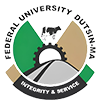GROWTH AND HERBAGE DRY MATTER YIELD OF COLUMBUS GRASS (Sorghum almum) AS INFLUENCED BY ORGANIC (POULTRY) MANURE LEVELS AND INTER ROW SPACING IN DAMATURU, NIGERIA
DOI:
https://doi.org/10.33003/japes.2025.v1i2.1-15Keywords:
Weeks after sowing, Columbus grass, Plant height, Fertilizer, Spacing, Herbage, PerformanceAbstract
This experiment evaluated the effects of organic fertilizer levels and inter-row spacing on the growth and herbage dry matter yield of Columbus grass (Sorghum almum) during the 2023 rainy season at the Teaching and Research Farm of Yobe State University, Damaturu. A factorial arrangement of five poultry manure rates (0, 2, 4, 6, and 8 t ha⁻¹) and three inter-row spacings (30, 50, and 70 cm) was laid out in a randomized complete block design with four replications, totaling fifteen treatment combinations. At 12 weeks after sowing (WAS), application of 8 t ha⁻¹ poultry manure significantly (P < 0.05) produced taller plants (290.58 cm), broader leaves (8.53 cm), longer leaves (109.69 cm), more leaves per plant (8.00), higher tiller number (18.00), and greater herbage dry matter yield (1.69 t ha⁻¹) compared to other treatments. Inter-row spacing also significantly influenced plant height, leaf dimensions, and tiller number (P < 0.05), with 70 cm spacing producing the tallest plants (257.60 cm) and the highest tiller number (12.00), comparable to the 50 cm spacing in leaf size and height. The study concludes that Columbus grass is well adapted to the Damaturu climate, exhibiting optimal growth and high herbage yield under these conditions. It is recommended to apply 8 t ha⁻¹ poultry manure combined with 70 cm inter-row spacing to maximize Columbus grass production in the study area.





